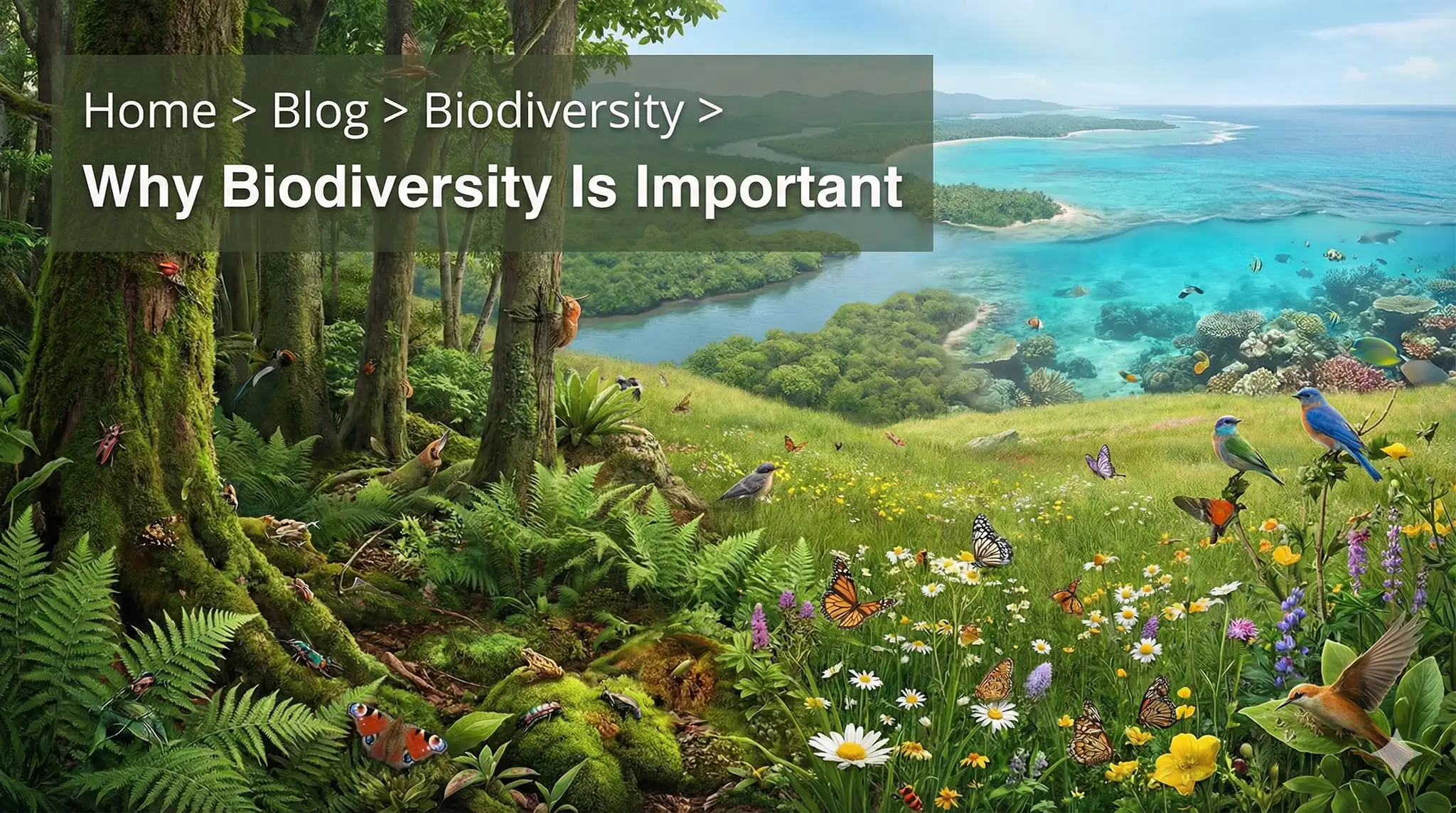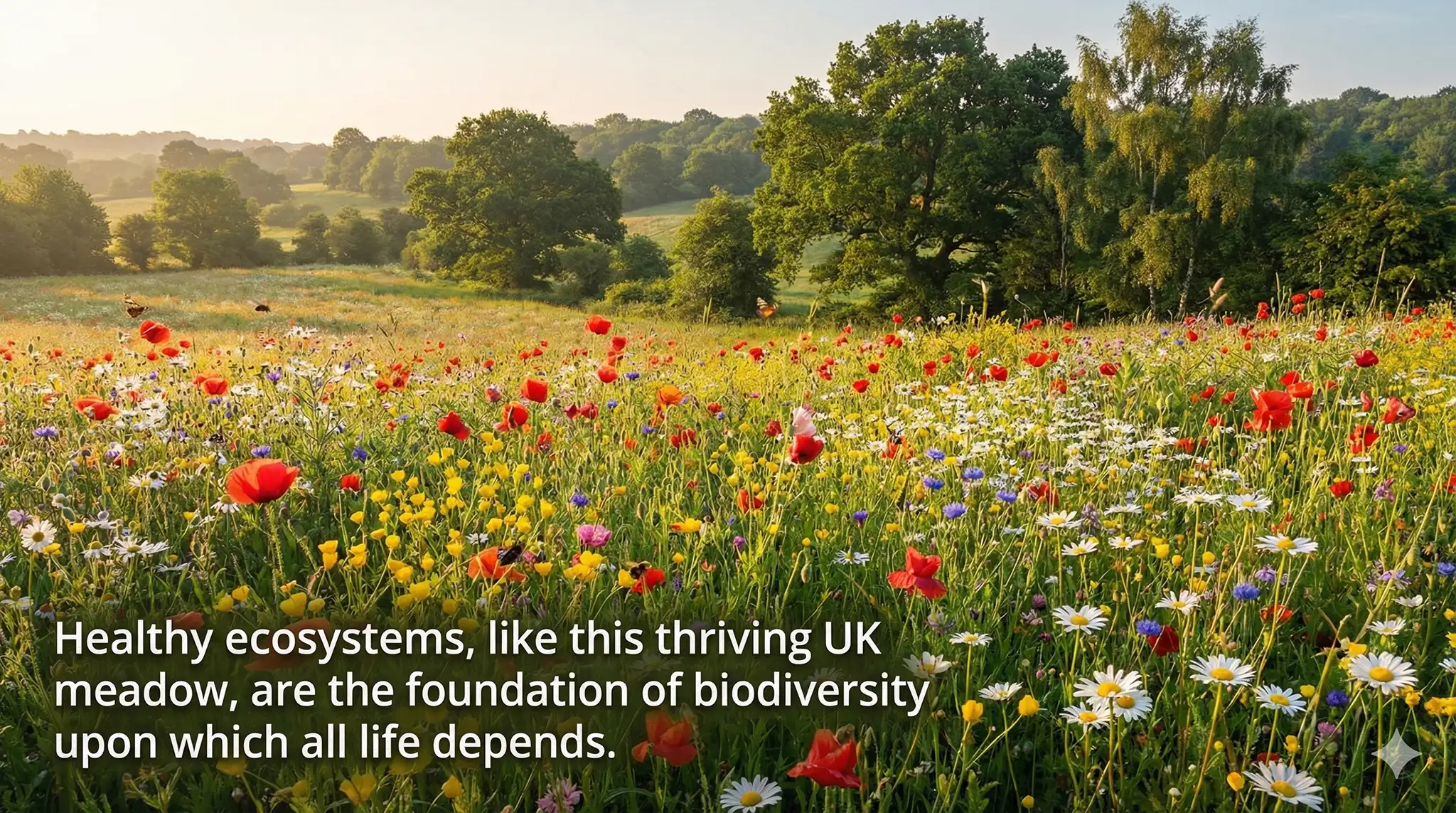Introduction
- Definition of Biodiversity loss
- Thesis statement: Biodiversity loss is a growing problem that has far-reaching consequences for the planet and its inhabitants.
What is Biodiversity Loss?
Why Biodiversity Loss Matters
- Explanation of the term
- Types of Biodiversity Loss (habitat destruction, introduction of invasive species, over-exploitation of resources, climate change, etc.)
- Statistics and data on the current rate of biodiversity loss
Consequences of Biodiversity Loss
- The Role of Biodiversity in Ecosystems
- Maintaining balance and stability
- Providing critical services (such as pollination and pest control)
- Biodiversity and Human Well-being
- Food security
- Medicinal benefits
- Economic importance
- Biodiversity and Climate Change
- Role of biodiversity in regulating the Earth's climate
- Impacts of biodiversity loss on the ability to mitigate and adapt to climate change
What Can Be Done?
- Extinction of Species
- Decline in Ecosystem Functioning
- Economic Impacts
- Social Impacts
Conclusion
- Government and Policy Action
- Protected Areas
- Sustainable Use and Management of Natural Resources
- Climate Mitigation and Adaptation Measures
- Individual Action
- Reducing Environmental Footprint
- Supporting Conservation Efforts
- Raising Awareness and Advocating for Change
-
Summary of key points
-
Call to action for individuals, governments, and society as a whole to take action to address biodiversity loss.
I. Introduction
Welcome to the world of nature and its diverse array of life forms. Today, I would like to bring your attention to a growing problem that affects us all - biodiversity loss.
But what exactly is biodiversity loss? Simply put, biodiversity refers to the variety of life on Earth - from the different species of plants and animals to the diversity of ecosystems they inhabit. Biodiversity loss, on the other hand, refers to the decline in the variety of life on Earth, which can occur due to various reasons such as habitat destruction, the introduction of invasive species, over-exploitation of resources, and climate change.
This loss of biodiversity has far-reaching consequences for the planet and its inhabitants. From the extinction of species to the decline in ecosystem functioning, the effects of biodiversity loss can be felt in multiple aspects of our lives. It is a problem that cannot be ignored and requires immediate action from all of us.
In this blog post, we will delve deeper into the issue of biodiversity loss, its causes, consequences, and what can be done to address it. The thesis statement of this blog post is: Biodiversity loss is a growing problem that has far-reaching consequences for the planet and its inhabitants.
What is Biodiversity Loss?
- What is Biodiversity Loss? A. Explanation of the Term As mentioned earlier, biodiversity refers to the variety of life on Earth and its diversity at different levels - species, genes, ecosystems, and biomes. Biodiversity loss, on the other hand, refers to the decline in the number and variety of species, habitats, and ecosystems on Earth.
- Types of Biodiversity Loss There are several factors that contribute to biodiversity loss, including:
- Habitat Destruction: The destruction and fragmentation of natural habitats, such as forests and wetlands, is one of the major causes of biodiversity loss. Habitat destruction reduces the amount of space available for wildlife to live, feed, and breed, leading to declines in population sizes and even extinction.
- Introduction of Invasive Species: The introduction of non-native species into new environments can disrupt the delicate balance of native ecosystems and lead to the decline of native species. Invasive species can outcompete native species for food and resources, and may even prey upon them, leading to declines in population sizes and even extinction.
- Over-Exploitation of Resources: Overfishing, overhunting, and over-harvesting of species and their habitats can lead to declines in population sizes and even extinction. These practices can also alter the structure and functioning of ecosystems, leading to further declines in biodiversity.
- Climate Change: Climate change is having a profound impact on biodiversity. Changes in temperature, precipitation patterns, and sea level are altering the distribution and abundance of species and leading to declines in population sizes and even extinction.
Statistics and data on the current rate of biodiversity loss
The current rate of biodiversity loss is staggering. According to the Intergovernmental Science-Policy Platform on Biodiversity and Ecosystem Services (IPBES), roughly 1 million species are at risk of extinction, many within decades, due to human activities. This represents a significant acceleration in the rate of species extinction compared to the past.
In addition, more than 40% of amphibian species, nearly 33% of reef-forming corals, and more than a third of all marine mammals are threatened. Habitat destruction continues at an alarming rate, with forests, wetlands, and other habitats being converted for human use at a rapid pace. These statistics clearly show that biodiversity loss is a growing problem that requires immediate action.
Why Biodiversity Loss Matters
The role of biodiversity in ecosystems
Biodiversity is the variety of life on Earth and it is what gives life to our planet. The loss of biodiversity is a growing problem that has serious consequences for our ecosystems and the planet as a whole. Biodiversity plays a crucial role in maintaining balance and stability within ecosystems and is also responsible for providing many critical services such as pollination and pest control.
- Maintaining balance and stability Ecosystems are complex networks of interdependent species that rely on each other for survival. The loss of a single species can have a ripple effect on the entire ecosystem, altering the delicate balance and causing widespread consequences. For example, the decline of pollinators such as bees and butterflies can lead to a decline in crop yields, while the loss of predator species can result in an increase in the populations of their prey, causing further imbalances.
- Providing critical services Biodiversity also provides many critical services to humans, such as pollination and pest control. Pollinators, like bees and butterflies, play a vital role in the production of many of the foods we eat, while predator species help to keep populations of harmful insects in check. The loss of these species and the services they provide can have serious implications for food security and the health of our ecosystems.
Biodiversity and human well-being
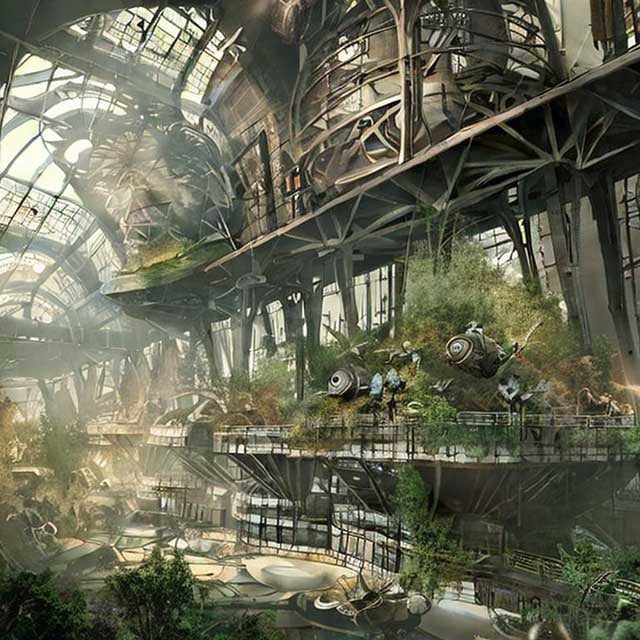 Biodiversity is not only important for the health of our ecosystems, but it also plays a critical role in human well-being. The loss of biodiversity can have far-reaching consequences for our food security, health, and economic prosperity.
Biodiversity is not only important for the health of our ecosystems, but it also plays a critical role in human well-being. The loss of biodiversity can have far-reaching consequences for our food security, health, and economic prosperity.
- Food security Biodiversity is essential for food security as it provides a wide range of crops and livestock that are the basis of our diets. The loss of biodiversity can lead to a decline in the availability and diversity of food, putting food security at risk.
- Medicinal benefits Biodiversity also provides numerous medicinal benefits to humans. Many of the medicines we rely on today come from wild plants and animals, and the loss of biodiversity can result in the loss of these valuable resources.
- Economic importance. Biodiversity is also of great economic importance. The loss of biodiversity can result in the loss of valuable resources such as timber, fish, and minerals, as well as the decline of important industries such as tourism and recreation.
Biodiversity and climate change
 Biodiversity is also closely linked to the Earth's climate, and the loss of biodiversity can have significant impacts on our ability to mitigate and adapt to the effects of climate change.
Biodiversity is also closely linked to the Earth's climate, and the loss of biodiversity can have significant impacts on our ability to mitigate and adapt to the effects of climate change.
- Role of biodiversity in regulating the Earth's climate Biodiversity plays a critical role in regulating the Earth's climate. For example, forests absorb and store carbon dioxide, one of the main greenhouse gases responsible for climate change. The loss of forests and other habitats can result in the release of this stored carbon, contributing to further climate change.
- Impacts of biodiversity loss on the ability to mitigate and adapt to climate change The loss of biodiversity can also have serious consequences for our ability to mitigate and adapt to the effects of climate change. For example, the decline of wetlands and mangroves, which act as natural barriers against sea level rise and storm surges, can result in increased vulnerability to coastal flooding and erosion. The loss of biodiversity can also result in a decline in the availability of crops and other resources that are essential for food security, making it more difficult for communities to adapt to the effects of climate change.
Consequences of Biodiversity Loss
- Extinction of Species. Biodiversity collapse can result in the extinction of species, many of which may have important roles in maintaining the balance and stability of ecosystems. The extinction of species also means that we are losing a wealth of genetic diversity, which could have important implications for future generations. In the past few decades, we have seen an alarming increase in the rate of species extinction, with many experts warning that we are now in the midst of a sixth mass extinction event.
- The decline in Ecosystem. Functioning Biodiversity loss can also result in a decline in the functioning of ecosystems. This decline can have a number of negative impacts, including changes to the water cycle, soil stability, and nutrient cycling. As biodiversity declines, ecosystems become less resilient and are more susceptible to invasive species and other forms of disturbance. This can have far-reaching consequences for the health and stability of ecosystems, with knock-on effects for the many species and human communities that depend on these ecosystems for their survival and well-being.
- Economic Impacts. The loss of biodiversity can also have significant economic impacts. For example, the decline of pollinators and other species that provide important services to agriculture can result in lower crop yields, which in turn can lead to increased food prices and reduced food security. The decline of coastal and marine ecosystems can also result in the loss of important fish stocks, which can have significant impacts on the fishing industry and the communities that depend on it for their livelihoods.
- Social Impacts. Finally, the loss of biodiversity can also have important social impacts. For example, the decline of important cultural species and ecosystems can result in the loss of important cultural and spiritual practices, which can have serious impacts on the well-being and identity of communities that depend on these resources. The decline of biodiversity can also result in the displacement of communities and the loss of important sources of food, medicine, and other resources, which can have serious impacts on human health and well-being.
What can be done?
To address the growing problem of biodiversity loss, a range of actions is required from both governments and individuals.
Government and policy action
-
- Protected Areas: Governments can take a leading role in preserving and protecting the remaining biodiversity by establishing protected areas such as national parks, wildlife reserves, and marine protected areas. These areas serve as a safe haven for endangered species and provide opportunities for scientific research and education.
- Sustainable Use and Management of Natural Resources: Governments can also regulate and manage the use of natural resources, such as forests, fisheries, and minerals, to ensure that they are being used in a sustainable manner. This can involve developing and enforcing policies to prevent over-exploitation and promote responsible resource use.
- Climate Mitigation and Adaptation Measures: Climate change is a major driver of biodiversity loss, and governments have a crucial role to play in mitigating its impacts. This can involve implementing policies and measures to reduce greenhouse gas emissions, promote energy efficiency, and adapt to the impacts of climate change.
Individual action
-
- Reducing Environmental Footprint: Every individual can make a difference by reducing their environmental footprint. This can involve simple actions like reducing energy and water use, reducing waste, and using public transportation or a bike instead of a car.
- Supporting Conservation Efforts: Supporting organizations and initiatives that work towards the conservation of biodiversity and habitats is another way that individuals can make a positive impact. This can involve volunteering, making a donation, or participating in conservation events.
- Raising Awareness and Advocating for Change: Raising awareness about the issue of biodiversity loss and advocating for change can also play a significant role in addressing the problem. This can involve educating friends, family, and community members, and engaging in advocacy campaigns to promote policies that support biodiversity conservation.
Conclusion
- Restate thesis: Biodiversity loss is a growing problem that has far-reaching consequences for the planet and its inhabitants.
- Summary of key points: The loss of biodiversity has a profound impact on ecosystems, human well-being, and the Earth's climate. Biodiversity is essential for maintaining the balance and stability of ecosystems, providing critical services such as pollination and pest control, and supporting food security, medicinal benefits, and economic importance. Biodiversity also plays a critical role in regulating the Earth's climate and its loss can impact our ability to mitigate and adapt to the effects of climate change.
- Call to action: To address the alarming reality of biodiversity loss, it is imperative that individuals, governments, and society as a whole take action. Government and policy action must prioritize protected areas, sustainable use and management of natural resources, and climate mitigation and adaptation measures. Individuals can play their part by reducing their environmental footprint, supporting conservation efforts, raising awareness and advocating for change. We all have a role to play in protecting the planet's rich diversity of life and ensuring a sustainable future for generations to come.
Ref: UN Report on the impact of biodiversity loss on nature
